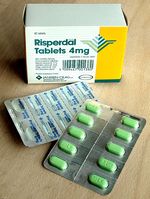
Photo from wikipedia
Abstract Bio-based active packaging using biodegradable polymers is in great demand in the market due to its environment-friendly perspective but having the issues of high production cost, processing and performance.… Click to show full abstract
Abstract Bio-based active packaging using biodegradable polymers is in great demand in the market due to its environment-friendly perspective but having the issues of high production cost, processing and performance. This study offers an industrially significant approach for the development of low-cost and eco-friendly bacterial nanocellulose (BNC) films using static intermittent fed-batch (SIFB) technology from low-cost medium i.e., fermented black tea. These BNC films were modified with a biopolymer–chitosan by simple immersion technique and analyzed for its usage as green and improved sustainable packaging material. After fermentation, the BNC was harvested, purified and oven-dried to obtain dry films. The results indicated a commendable BNC production of 29.2 gL-1 with the 63.2% substrate conversion to the BNC which was almost double than that obtained with a conventional static method (32%). The films were characterized using field emission scanning electron microscopy, attenuated total reflectance Fourier transform infrared spectroscopy, X-ray diffraction and thermogravimetric analysis. The antibiotic susceptibility test showed an inhibition zone of 40 ± 1 mm and 37 ± 3 mm for Escherichia coli and Aerococcus viridans, respectively for BNC-chitosan nano-biocomposite films showing their potential as an active packaging material. The presence of chitosan in the film is responsible for its antibacterial nature that might have caused cell wall lysis or inhibited protein synthesis in bacteria. Besides this, it’s good mechanical strength, crystalline nature, resistance to air and shelf life assessment of tomatoes showed the great potential of BNC-chitosan films to be used for low-cost active packaging, which is incalculably demanded by the packaging industry.
Journal Title: Journal of Cleaner Production
Year Published: 2021
Link to full text (if available)
Share on Social Media: Sign Up to like & get
recommendations!